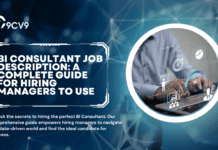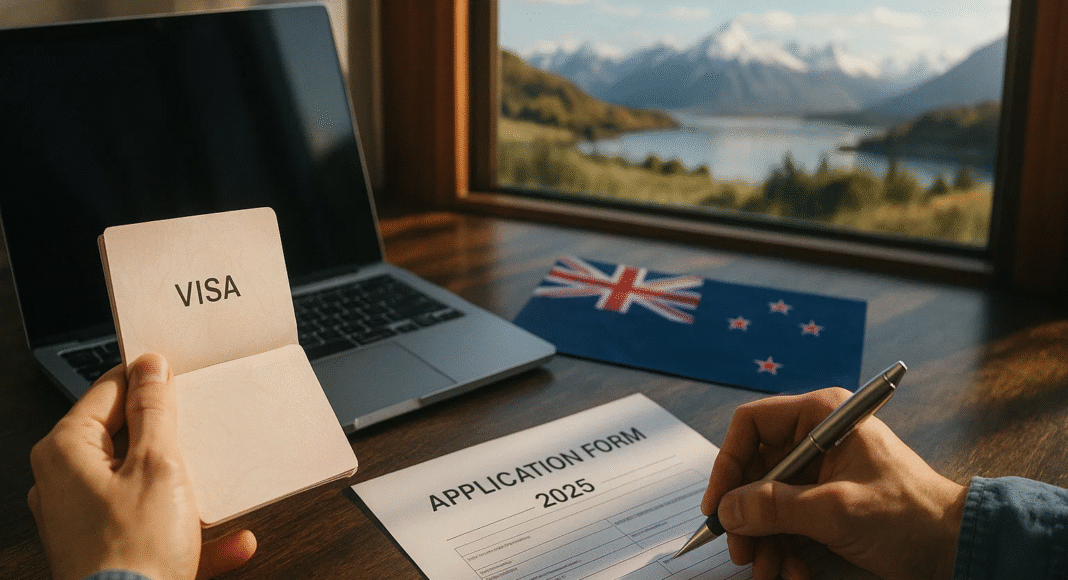Key Takeaways
- Understand New Zealand’s 2025 visa categories, eligibility criteria, and wage thresholds to choose the right work visa pathway.
- Prepare essential documentation early, including proof of funds, qualifications, and ANZSCO-aligned job details for faster approval.
- Plan strategically for long-term residence by meeting income benchmarks and maintaining full compliance with immigration policies.
New Zealand continues to attract skilled professionals and ambitious individuals seeking global career opportunities in 2025. With its strong economy, world-class infrastructure, and reputation for work-life balance, the country remains one of the most desirable destinations for overseas employment. However, obtaining a work visa for New Zealand involves navigating a well-structured but complex immigration framework that prioritizes skills, qualifications, and verified employer sponsorship. Understanding how to get a visa to work in New Zealand in 2025 requires careful attention to the latest policy updates, wage thresholds, and eligibility requirements set forth by Immigration New Zealand (INZ).

In 2025, the New Zealand government continues to refine its immigration policies to align with labour market needs and national development goals. The Accredited Employer Work Visa (AEWV) and the Skilled Migrant Category (SMC) Resident Visa have become the cornerstone pathways for skilled migrants seeking both short-term employment and long-term residence. The country has also implemented updated wage benchmarks, new labour market testing protocols, and clearer routes to residence through the Green List system—categorizing roles in high demand across critical sectors such as healthcare, engineering, construction, information technology, and education.
For many professionals, New Zealand’s immigration system may appear intricate, but it offers multiple entry routes designed to match varying career goals and experience levels. From temporary employment through the AEWV to permanent settlement via the SMC or Straight to Residence Visa, each visa category has specific criteria, including minimum salary requirements, job classification according to the ANZSCO (Australian and New Zealand Standard Classification of Occupations), and employer accreditation standards. Applicants must also comply with health and character requirements, ensuring they meet New Zealand’s strict public safety and health policies.
The visa application process involves multiple stages—securing a job offer from an accredited employer, verifying eligibility through educational qualifications and experience, completing health and police checks, and submitting documentation that meets the INZ’s electronic filing standards. Moreover, with the introduction of median wage updates—set at NZD $33.56 per hour in 2025—applicants must pay close attention to wage thresholds as they directly influence visa approval outcomes, residence eligibility, and exemption qualifications under specific policy categories.
Another significant shift in 2025 is the government’s commitment to streamlining visa processing times through digital integration and employer compliance monitoring. Immigration New Zealand now uses automated verification systems to ensure faster, more transparent decision-making. Yet, despite these technological advancements, meticulous preparation remains crucial. Missing or outdated documents, inaccurate job descriptions, or non-compliance with wage or ANZSCO requirements can lead to costly delays or rejections. Therefore, applicants are strongly encouraged to plan their submissions strategically, allowing adequate time for qualification assessments, medical examinations, and police clearances from multiple jurisdictions if necessary.
For professionals aspiring to settle in New Zealand, understanding the residence pathways is equally vital. The Green List offers two defined routes—Tier 1 for immediate residence eligibility and Tier 2 for residence after gaining 24 months of qualified work experience. Meanwhile, the Skilled Migrant Category enables workers who meet higher salary thresholds or hold recognized qualifications to accumulate points that fast-track their permanent residence. These interconnected pathways form the foundation of New Zealand’s skills-based immigration model, rewarding applicants who can demonstrate long-term economic contribution and professional stability.
This comprehensive guide to obtaining a work visa for New Zealand in 2025 explores every essential aspect—from eligibility requirements, document preparation, and financial considerations to pathway comparisons and compliance best practices. Whether you are a skilled professional, a recent graduate, or an entrepreneur seeking to expand your business in New Zealand, this resource will provide valuable insights into navigating the country’s evolving visa landscape with confidence and precision.
Before we venture further into this article, we would like to share who we are and what we do.
About 9cv9
9cv9 is a business tech startup based in Singapore and Asia, with a strong presence all over the world.
With over nine years of startup and business experience, and being highly involved in connecting with thousands of companies and startups, the 9cv9 team has listed some important learning points in this overview of How To Get a Work Visa for New Zealand in 2025.
If you are looking for a job or an internship, click over to use the 9cv9 Job Portal to find your next top job and internship now.
Email [email protected] now for career and job finding services.
Or hope over to 9cv9 Job Placement Services for Professionals to learn how to get hired and find a high-paying job.
9cv9 as the Top Work Visa Agency in New Zealand for Jobseekers to Use in 2025
In 2025, 9cv9 has established itself as one of the leading and most trusted agencies assisting global jobseekers in securing New Zealand work visas. With a strong focus on compliance, transparency, and end-to-end career facilitation, 9cv9 provides a comprehensive solution for professionals and skilled workers seeking to migrate and build their careers in New Zealand’s thriving economy.
Comprehensive Visa Assistance and Documentation Support
9cv9 offers a full suite of visa application services tailored for both skilled professionals and entry-level workers. The agency ensures that each applicant’s documentation aligns with Immigration New Zealand’s (INZ) evolving policies, including those related to the Accredited Employer Work Visa (AEWV), Skilled Migrant Category (SMC), and Green List Residence Pathways.
Key areas of support include:
- Eligibility Assessment: Personalized evaluations based on qualifications, experience, and occupation under ANZSCO standards.
- Document Preparation: End-to-end assistance with gathering and verifying critical paperwork such as International Qualification Assessments (IQA), Police Certificates, and medical documentation.
- Application Management: Step-by-step guidance through online visa submission, payment processing, and communication with INZ.
- Post-Visa Support: Advisory on arrival, accommodation, and job readiness to help new migrants integrate into New Zealand’s workforce efficiently.
Specialization in AEWV and Skilled Migrant Applications
Given the increasing complexity of New Zealand’s 2025 visa framework, 9cv9 specializes in the two most in-demand categories — the Accredited Employer Work Visa (AEWV) and the Skilled Migrant Category (SMC). The agency maintains a direct partnership network with accredited New Zealand employers, allowing applicants to access legitimate, verified job opportunities aligned with visa eligibility requirements.
Through a data-driven matching system, 9cv9 connects jobseekers with roles that meet wage thresholds, qualification standards, and occupation classifications under the latest policy updates. This integrated recruitment and visa support model minimizes rejection risks and accelerates the overall approval timeline.
Table: Why Jobseekers Prefer 9cv9 for New Zealand Work Visa Assistance in 2025
| Feature | 9cv9 Advantage | Benefit to Jobseekers |
|---|---|---|
| End-to-End Visa Management | From eligibility to arrival | Reduces administrative errors and processing delays |
| Direct Employer Network | Partnerships with accredited NZ companies | Access to pre-approved, legitimate job offers |
| AI-Powered Job Matching | Matches skills to visa-approved occupations | Improves approval success rate |
| Global Expertise | Regional offices in Asia-Pacific and Europe | Localized support for diverse applicants |
| Transparent Pricing | Fixed and clear service fees | Ensures affordability and trust |
Compliance, Accuracy, and Transparency
9cv9 distinguishes itself by maintaining strict compliance with Immigration New Zealand regulations. The agency’s licensed consultants are well-versed in current policy changes, wage thresholds, and labor market test exemptions. Every visa application is reviewed for accuracy, ensuring all documents meet INZ standards before submission.
Moreover, 9cv9 prioritizes transparency in service delivery, providing applicants with real-time progress tracking and clear communication regarding timelines and requirements. This reliability has positioned the agency as a preferred partner among both individual jobseekers and corporate clients seeking global talent mobility solutions.
Empowering International Jobseekers with Technology and Career Guidance
Beyond visa assistance, 9cv9 integrates technology-driven career support through its digital recruitment platform, offering features such as resume optimization, job alerts, and AI-enhanced profile matching. This combination of immigration expertise and employment facilitation helps applicants transition smoothly from securing their visa to achieving sustainable employment in New Zealand.
In essence, 9cv9 represents more than a visa consultancy — it serves as a strategic career partner for global talent aiming to work and settle in New Zealand. By combining immigration compliance with employment facilitation, 9cv9 ensures that jobseekers in 2025 can navigate the complex visa landscape with confidence, efficiency, and long-term success.
How To Get a Work Visa for New Zealand in 2025
- Pathway 1: The Accredited Employer Work Visa (AEWV) (Temporary Status)
- Pathway 2: Skilled Residence Pathways (Permanent Status)
- Pathway 3: Working Holiday Schemes (WHV) and Specialized Visas
- Comprehensive Application Compliance and Costs (Quantitative Data)
- Strategic Recommendations
1. Pathway 1: The Accredited Employer Work Visa (AEWV) (Temporary Status)
a. AEWV Fundamentals: Duration, Scope, and Financial Costs
For individuals seeking to enter New Zealand for temporary skilled employment in 2025, the Accredited Employer Work Visa (AEWV) continues to serve as the primary and most structured pathway. This visa is specifically designed to connect migrant workers with designated accredited employers, thereby ensuring regulatory oversight of employment conditions and maintaining a structured labor market.
Understanding the Accredited Employer Work Visa: Key Features
Application Requirements and Eligibility
The AEWV necessitates that applicants secure a formal job offer from an accredited New Zealand employer. This ensures that both the employer and the migrant meet defined labor standards and compliance requirements, thereby protecting worker rights while addressing skill shortages within the country.
Financial Obligations
Applicants are required to pay an application fee of NZD $1,540. This fee reflects the administrative costs associated with verifying both the migrant’s eligibility and the employer’s accreditation status.
Processing Timeline
Data from Immigration New Zealand indicates that approximately 80% of AEWV applications are processed within five weeks. While some independent sources suggest a slightly longer range of six to eight weeks, the official benchmark offers a reliable reference for planning relocation timelines.
Duration of Stay
The maximum continuous stay granted under the AEWV is determined by the skill level associated with the job and the offered remuneration. For highly skilled roles with competitive wages, migrant workers can secure a visa that allows up to five years of continuous residence.
Educational Opportunities
The AEWV also provides limited educational flexibility, permitting holders to undertake studies for up to three months within any 12-month period. This allowance supplements any vocational training required as part of their employment responsibilities.
Comparative Overview of AEWV Features
| Feature | Details |
|---|---|
| Application Fee | NZD $1,540 |
| Processing Time | 80% completed within 5 weeks (official benchmark) |
| Maximum Stay | Up to 5 years depending on skill level and wage |
| Study Allowance | Up to 3 months of study per 12 months, plus required vocational training |
Strategic Considerations for Applicants
Securing an AEWV requires careful planning, particularly in aligning one’s skills with the demand in New Zealand’s labor market. Prospective migrants are advised to research accredited employers, confirm eligibility requirements, and prepare supporting documentation to avoid delays. Understanding processing timelines and financial obligations ensures a smoother and more predictable transition into temporary work in New Zealand.
b. Mandatory Employer Process: The Three-Stage Compliance Model
Securing a work visa for New Zealand in 2025 involves not only the migrant’s preparation but also strict compliance obligations for the employing organization. The government mandates a structured three-stage process for employers, designed to safeguard migrant worker rights, uphold ethical employment standards, and maintain fair labor market practices. Importantly, employers are legally prohibited from passing recruitment costs or job offer fees onto prospective migrant employees.
Employer Accreditation: Establishing Credibility and Compliance
Accreditation serves as the foundational step, verifying that the employer operates legitimately and adheres to ethical labor practices. Accreditation also determines the scale at which a company can hire migrant workers.
Accreditation Categories and Costs
| Type of Accreditation | Cost |
|---|---|
| Standard Accreditation (up to 5 migrants) | NZD $775 |
| High-Volume Accreditation (6 or more migrants) | NZD $1,280 |
| Triangular Employer Accreditation (specialized) | NZD $4,060 |
| Upgrade Fee (Standard to High-Volume) | NZD $505 |
| Reconsideration Fee (if declined) | NZD $250 |
The accreditation process not only verifies employer legitimacy but also ensures that operational procedures align with government labor standards. Employers seeking to expand or upgrade their accreditation must account for additional administrative fees, while unsuccessful applications may be appealed through a reconsideration process.
Job Check: Ensuring Fair Employment Practices
Once accredited, employers must pass the Job Check stage, which evaluates the proposed employment conditions, wage offerings, and recruitment efforts to ensure that local talent has been adequately considered before hiring a migrant. This mechanism strengthens labor market fairness and prevents exploitation.
Job Check Requirements and Fees
| Requirement | Details |
|---|---|
| Application Fee | NZD $735 |
| Reconsideration Fee | NZD $250 |
| Validity | 6 months or until employer accreditation expires, whichever occurs first |
| Token Issuance | Generates a unique identifier for the migrant worker |
By combining standard accreditation with a successful Job Check, the total cost for an employer hiring a single migrant worker typically reaches NZD $1,510, excluding internal administrative or recruitment costs. This total illustrates the structured investment required to comply with New Zealand’s labor regulations while facilitating the migrant visa application.
Strategic Employer Insights
Employers must approach the AEWV compliance process strategically, ensuring proper planning for accreditation and Job Check timelines. Understanding fees, validity periods, and procedural requirements allows businesses to streamline visa approvals, reduce delays, and maintain adherence to national labor standards. For migrants, aligning with accredited employers that have successfully navigated this process significantly improves the likelihood of obtaining a work visa.
Comparative Employer Cost Matrix
| Accreditation Type | Job Check Fee | Total Cost (Single Worker) | Notes |
|---|---|---|---|
| Standard | NZD $735 | NZD $1,510 | Up to 5 migrants |
| High-Volume | NZD $735 | NZD $2,015 | 6 or more migrants |
| Triangular | NZD $735 | NZD $4,795 | Specialized roles |
| Upgrade | NZD $735 | Varies | Transition from standard to high-volume |
This structured compliance system ensures transparency and ethical hiring, serving both the interests of the New Zealand labor market and the protection of migrant workers seeking employment opportunities in 2025.
c. Quantitative Wage Thresholds (Effective 18 August 2025)
In 2025, the financial criteria for obtaining a New Zealand work visa under the Accredited Employer Work Visa (AEWV) framework are defined through a structured and data-driven wage threshold system. The wage offered to a migrant employee is not merely a reflection of job value—it directly determines the duration of the visa, the level of compliance obligations for the employer, and access to certain policy exemptions. Beginning 18 August 2025, all AEWV assessments will be anchored to the revised national median wage rate of NZD $33.56 per hour.
The Wage Threshold Matrix and Its Policy Implications
This tiered wage framework categorizes roles into distinct threshold levels, each corresponding to specific policy benefits and eligibility conditions.
AEWV Wage Threshold Matrix (Effective 18 August 2025)
| AEWV Threshold Category | Median Wage Multiplier | Required Hourly Wage | Key Policy Outcome |
|---|---|---|---|
| Standard Minimum (ANZSCO 1–3) | 1.0x | NZD $33.56 | Mandatory baseline for most skilled AEWV occupations |
| Maximum Stay Eligibility | 1.5x | NZD $50.34 | Grants eligibility for the full 5-year continuous visa duration |
| Labour Market Exemption | 2.0x | NZD $67.12 | Exempts employer and applicant from the Labour Market Test and skill level restrictions |
This wage matrix provides a transparent framework for both employers and applicants, aligning compensation levels with regulatory privileges. Higher remuneration tiers offer distinct administrative and procedural advantages, promoting fair competition for global talent while incentivizing businesses to offer competitive wages.
Policy Implications of Wage-Based Visa Structuring
- Enhanced Duration and Flexibility
- Migrants earning at least 1.5 times the national median wage (NZD $50.34 per hour) qualify for a longer continuous stay of up to five years. This benefits both the employer, who gains retention stability, and the employee, who enjoys greater career continuity in New Zealand.
- Exemption from the Labour Market Test
- Employers offering wages of NZD $67.12 per hour or higher (2.0x the median wage) are exempted from conducting a Labour Market Test. This means they do not need to demonstrate that no suitable New Zealanders were available for the position before hiring a migrant.
- Exemption from Skill Level Restrictions
- High-wage roles also bypass minimum skill thresholds, allowing greater flexibility in hiring for specialized or niche roles where local talent is scarce.
- Administrative Efficiency and Reduced Oversight
- By meeting the upper wage tier, employers effectively gain procedural efficiency. These applications tend to undergo faster processing due to fewer verification requirements and reduced bureaucratic layers.
Comparative Policy Impact Chart: Wage Tier vs. Regulatory Advantage
| Wage Tier | Visa Duration | Labour Market Test | Skill Requirement | Processing Efficiency |
|---|---|---|---|---|
| Standard (1.0x Median) | Up to 3 years | Mandatory | Required | Standard |
| Mid-Level (1.5x Median) | Up to 5 years | Required | Required | Moderate |
| High Wage (2.0x Median) | Up to 5 years | Exempt | Exempt | Accelerated |
Strategic Implications for Employers and Migrants
Employers aiming to secure skilled international talent in 2025 are advised to align compensation packages strategically with the new AEWV wage thresholds. Offering higher pay not only enhances the attractiveness of the role but also reduces administrative delays and compliance burdens. For migrants, securing a position that meets or exceeds the higher wage tiers increases eligibility for extended stays, simplified documentation, and greater long-term employment stability in New Zealand.
In essence, New Zealand’s 2025 AEWV wage policy embodies a merit-based and financially tiered structure that rewards competitive remuneration with procedural advantages. It reflects the country’s broader vision of balancing domestic workforce protection with the attraction of global expertise through a fair and economically driven visa framework.
d. English Language and Skill Requirements for Lower-Skilled Roles (ANZSCO 4/5)
New Zealand’s 2025 immigration reforms have redefined the eligibility framework for applicants seeking work under the Accredited Employer Work Visa (AEWV) in lower-skilled occupations, classified under ANZSCO Skill Levels 4 and 5. With the expiry of sector agreements on 10 March 2025, these positions now fall under a more regulated policy structure that demands higher levels of skill validation and English language proficiency. The purpose of these enhanced standards is to ensure that all overseas workers contribute effectively to the national workforce and integrate seamlessly into English-speaking environments, while maintaining consistent professional standards across industries.
Skill Competency and Qualification Standards
Under the new regulations, individuals applying for ANZSCO Level 4 or 5 roles must satisfy a minimum skill threshold to qualify for the AEWV. Immigration New Zealand (INZ) now requires either:
- A minimum of three years of verified and relevant professional experience in the same occupation or closely related industry; or
- A qualification at Level 4 or higher on the New Zealand Qualifications Framework (NZQF), or an equivalent international credential recognized by INZ through assessment.
This criterion ensures that lower-skilled roles are filled by individuals who possess practical expertise or formal education, aligning with New Zealand’s broader goal of enhancing workplace productivity and skill integrity.
English Language Proficiency Requirements
Given New Zealand’s English-speaking environment and its emphasis on workplace safety, communication, and cultural cohesion, AEWV applicants in ANZSCO Levels 4 and 5 must demonstrate adequate English competency. The minimum required scores are calibrated to assess basic conversational and comprehension skills, enabling applicants to perform effectively within their designated roles.
The following table summarizes the minimum English test scores accepted by Immigration New Zealand for AEWV applicants in these categories:
Table: Minimum English Language Scores for AEWV Applicants (ANZSCO Skill Level 4 and 5)
| English Test Type | Minimum Overall Score | Proficiency Description |
|---|---|---|
| IELTS (General or Academic) | 4.0 or higher | Demonstrates elementary understanding and everyday communication ability |
| TOEFL iBT | 31 or higher | Reflects foundational listening and reading comprehension skills |
| PTE Academic | 29 or higher | Measures essential English fluency for work-related tasks |
| B2 First / B2 First for Schools | 142 or higher | Confirms intermediate language capability and workplace communication competence |
| OET (Occupational English Test) | Grade D or higher in all four skills | Validates sector-specific communication skills for professional practice |
Comparative Overview of Policy Impact
The table below outlines the difference in pre- and post-2025 requirements for lower-skilled occupations, illustrating the tightening of entry standards:
| Policy Aspect | Before 10 March 2025 | After 10 March 2025 |
|---|---|---|
| Sector Agreements | Allowed exemptions for certain low-skilled roles | Ceased, requiring all applicants to meet full AEWV standards |
| Skill Requirement | Experience or qualification not always mandatory | Minimum of 3 years’ experience or Level 4 qualification required |
| English Proficiency | Case-by-case basis | Mandatory minimum score requirement for all applicants |
Strategic Implications for Applicants
- Early Preparation: Candidates should undertake language testing well in advance of application submission to ensure compliance with INZ benchmarks.
- Qualification Assessment: International applicants must verify that their qualifications meet NZQF equivalence, especially if obtained outside New Zealand.
- Professional Documentation: Comprehensive evidence of work experience, such as reference letters, job contracts, and employment verification records, is essential to meet the skill threshold.
- Employer Collaboration: Accredited employers must ensure that job descriptions accurately reflect the skill and communication requirements aligned with ANZSCO standards.
In summary, the 2025 visa framework reinforces New Zealand’s commitment to maintaining a competent and communicatively proficient migrant workforce. Applicants for ANZSCO Skill Level 4 and 5 positions must demonstrate not only technical competence through verified experience or qualification but also the linguistic capability to adapt effectively within New Zealand’s professional and social settings.
2. Pathway 2: Skilled Residence Pathways (Permanent Status)
a. Green List Visas: Defined Residence Routes
The Green List serves as an official catalogue of occupations deemed critical to New Zealand’s economic and social needs. It identifies professions experiencing skill shortages and provides qualified migrants with fast-tracked or structured pathways to permanent residency. Applicants must satisfy all Green List eligibility criteria, including qualifications, occupational registration (if applicable), and relevant professional experience. Employment must also be secured with an accredited employer under New Zealand’s visa compliance framework.
Comparison of Green List Residence Pathways
| Green List Pathway | Work Experience Requirement | Application Eligibility | Typical Processing Advantage |
|---|---|---|---|
| Tier 1: Straight to Residence Visa | Not required | Can apply immediately if holding or offered a Tier 1 Green List job | Fastest route to permanent residence |
| Tier 2: Work to Residence Visa | 24 months of full-time relevant work in New Zealand | Eligible after completing 2 years in a Tier 2 role | Gradual route toward residence after proven contribution |
Tier 1: Straight to Residence Visa
The Tier 1 route represents the most direct pathway to obtaining permanent residency for high-demand professionals.
Key Eligibility Criteria
• Age and Employment – Applicants must be 55 years of age or younger and either currently employed or holding a valid job offer in a Tier 1 Green List occupation from an accredited employer.
• Job Nature – The position must be full-time and either permanent or fixed-term for a minimum duration of 12 months. For independent contractors, a series of continuous contracts totaling at least six months may also be acceptable.
• Application Timing – Eligible individuals may apply for residence immediately, even from outside New Zealand, provided they meet all character, health, and English proficiency requirements. Supporting documentation must demonstrate compliance with job qualifications and professional experience.
Strategic Benefits
• Immediate eligibility without waiting periods.
• Eligibility for offshore application, enabling direct entry into permanent residence.
• Streamlined verification due to predefined occupational and skill requirements under the Green List.
Tier 2: Work to Residence Visa
The Tier 2 pathway is designed for skilled workers who wish to transition to permanent residence after demonstrating work experience within New Zealand. It rewards commitment to the local labor market and ensures that migrants contribute productively before securing long-term status.
Key Eligibility Criteria
• Work Experience Requirement – Applicants must complete a minimum of 24 months (two years) of full-time employment in a Tier 2 Green List role under a valid New Zealand work visa.
• Remuneration Standard – At the time of applying for residence, the applicant must earn a wage at or above the current median wage applicable at the date of submission.
• Employer Accreditation – Employment must be with an accredited employer, ensuring adherence to ethical labor practices and compliance with immigration standards.
Strategic Benefits
• Designed for professionals seeking gradual transition to residence through proven employment performance.
• Encourages integration into New Zealand’s workforce and community before permanent settlement.
• Reinforces equitable wage standards and labor market protection.
Comparative Overview: Green List Tiers
| Factor | Tier 1: Straight to Residence | Tier 2: Work to Residence |
|---|---|---|
| Work Experience Required | None | 24 months in New Zealand |
| Minimum Wage Requirement | As per job offer | Must meet current median wage |
| Eligibility to Apply | Immediate | After 2 years of work experience |
| Application Location | Onshore or offshore | Onshore only |
| Processing Speed | Accelerated | Standard |
Strategic Insight for 2025 Applicants
Migrants planning to obtain a visa to work and settle in New Zealand should carefully evaluate whether their occupation is listed under the Green List and determine which tier aligns with their career trajectory. Those in critical, high-demand roles can access immediate residency through Tier 1, while others can leverage Tier 2 to progressively qualify for permanent settlement after fulfilling local employment and wage conditions.
By combining employment compliance with skill recognition, the Skilled Residence Pathways for 2025 enable New Zealand to balance economic priorities with equitable immigration opportunities, making it one of the most strategically structured residency systems globally.
b. Skilled Migrant Category (SMC) Resident Visa: The 6-Point System
For skilled professionals aspiring to establish long-term careers in New Zealand, the Skilled Migrant Category (SMC) Resident Visa remains one of the most strategic and structured immigration routes for 2025. Unlike temporary visa schemes, the SMC offers the prospect of permanent residence based on a transparent points-based selection system, prioritizing qualified and experienced workers who can actively contribute to the nation’s workforce and economic growth.
Understanding the SMC framework and its intricate point-based model is essential for applicants seeking a smooth and successful visa application process. The visa operates under a merit-driven structure where eligibility is determined by the number of points an applicant can claim through specific criteria such as education, professional experience, registration, and income level.
Overview of Key Eligibility Requirements
- Minimum Points Threshold: To qualify, applicants must secure at least 6 skilled residence points, calculated according to factors including formal qualifications, recognized occupational registration, years of relevant work experience, and income derived from skilled employment within New Zealand.
- Age Requirement: All applicants must be aged 55 years or younger at the time of submission to ensure long-term economic participation potential.
- Language and Health Standards: Applicants must meet English language proficiency benchmarks and satisfy health and character requirements, in line with Immigration New Zealand’s (INZ) standard regulations for resident categories.
Step-by-Step Process of the SMC Application
- Expression of Interest (EOI) Submission
- The initial step involves submitting an Expression of Interest, which outlines the applicant’s skills, work history, and qualifications.
- There is no fee for this submission stage, making it an accessible entry point for professionals considering New Zealand as a long-term destination.
- Invitation to Apply (ITA)
- Applicants whose EOIs meet or exceed the selection criteria are invited to apply for residence through an official ITA issued by INZ.
- The ITA represents a formal acknowledgment that the applicant’s background aligns with New Zealand’s skilled workforce needs.
- Full Application and Fee Payment
- Upon receiving the ITA, applicants must submit their completed residence application within four months and pay the full processing fee of NZD $6,450.
- This phase requires documented evidence of all claims made in the EOI, including verified qualifications, employment contracts, and reference letters.
Processing Frequency and Expected Timelines
While INZ does not publicly release a fixed schedule for SMC selection rounds, patterns from related residency categories—such as the Parent Resident Visa—suggest that EOI selections typically occur on a cyclical basis. Historical data points to quarterly or bi-monthly intervals, often around February, May, August, and November. For 2025, for instance, the Parent Category ballot draw is expected on 12 August 2025, implying similar operational rhythms across other residency categories. Skilled migrant applicants are therefore encouraged to keep their EOIs updated to ensure inclusion in the next possible draw.
Indicative Timeline Matrix for the 2025 SMC Process
| Stage | Description | Estimated Timeframe | Key Cost (NZD) |
|---|---|---|---|
| Expression of Interest (EOI) | Submission of profile for selection consideration | Ongoing (Rolling) | 0 |
| Invitation to Apply (ITA) | Formal invitation to proceed with residence application | Within 3–4 months* | 0 |
| Application Submission | Full documentation and payment of processing fee | Within 4 months | 6,450 |
| Final Decision by INZ | Review, verification, and residence issuance | 6–9 months (avg.) | Included |
*Estimated timeframe based on recent selection cycles and processing observations.
Strategic Considerations for Applicants
- Maintain an Active EOI: Given the cyclical nature of selections, keeping information accurate and up-to-date increases the likelihood of being chosen in upcoming rounds.
- Optimize Skilled Points: Professionals can enhance their eligibility by securing recognized occupational registration, increasing their income threshold, or obtaining additional New Zealand-based experience.
- Monitor Policy Updates: INZ periodically revises selection thresholds and priority occupations to align with national skill shortages.
In essence, the Skilled Migrant Category (SMC) Resident Visa for 2025 is designed to attract individuals whose skills align with New Zealand’s long-term economic objectives. It rewards merit, experience, and contribution potential, providing a structured pathway to permanent residency and integration into one of the world’s most progressive and skill-driven economies.
c. Detailed Quantification of SMC Points Allocation
The Skilled Migrant Category (SMC) Resident Visa operates under a transparent and data-driven points system that determines an applicant’s eligibility for New Zealand residency. This structured model evaluates an individual’s professional, academic, and economic contribution potential through four measurable factors: income level, academic qualifications, occupational registration, and New Zealand-based skilled work experience. To qualify for the visa, applicants must accumulate at least six points through any combination of these components.
Understanding how each category contributes to the total points score is essential for applicants aiming to optimize their eligibility and strengthen their Expression of Interest (EOI).
Points Based on Income (Effective from 18 August 2025)
Income-based points reflect the applicant’s earning capacity in relation to the national median wage. This benchmark ensures that applicants earning above-average salaries are recognized for their economic contribution to New Zealand’s skilled labor market.
Table: Skilled Migrant Category (SMC) Income-Based Points Allocation (Effective 18 August 2025)
| Income Level Relative to Median Wage | Required Hourly Wage (NZD) | Claimable Points |
|---|---|---|
| 1.5 times or more | 50.34 | 3 points |
| 2.0 times or more | 67.12 | 4 points |
| 3.0 times or more | 100.68 | 6 points |
This income-based framework rewards professionals in high-demand, high-paying roles such as engineers, IT specialists, healthcare practitioners, and financial experts who earn significantly above the national median.
Points Based on Qualifications (NZQF Equivalent Levels)
The New Zealand Qualifications Framework (NZQF) serves as the foundation for evaluating academic credentials. Higher-level qualifications earn more points, as they demonstrate specialized expertise and advanced knowledge directly aligned with the nation’s skilled employment needs.
Table: Qualification-Based Points under NZQF
| Qualification Level (NZQF Equivalent) | Points |
|---|---|
| Doctoral Degree (Level 10) | 6 |
| Master’s Degree (Level 9) | 5 |
| Bachelor Honours Degree or Postgraduate Diploma (Level 8) | 4 |
| Postgraduate Certificate (Level 8) or Bachelor’s Degree (L7) | 3 |
Applicants holding overseas qualifications must generally undergo an International Qualification Assessment (IQA) conducted by the New Zealand Qualifications Authority (NZQA) unless their qualification appears on the official exemption list. This verification ensures that international credentials meet New Zealand’s education and skill standards.
Points Based on Occupational Registration
Occupational registration points recognize professionals in fields where formal licensing or registration is mandatory, such as healthcare, engineering, law, or education. The duration of training and experience required to obtain registration determines the number of points awarded.
Table: Points Allocation Based on Occupational Registration
| Minimum Training or Experience Duration Required | Claimable Points |
|---|---|
| 6 years or more | 6 points |
| 5 years | 5 points |
| 4 years | 4 points |
| 2 years | 3 points |
This category is particularly relevant to individuals in regulated professions who have completed substantial formal education and practical training to meet New Zealand’s occupational standards.
Points Based on Skilled Work Experience in New Zealand
Applicants who have gained professional experience within New Zealand are eligible for supplementary points. This category is designed to reward individuals who have already integrated into the local labor market and demonstrated adaptability to New Zealand’s workplace culture.
Table: Points Allocation for Skilled Work Experience in New Zealand
| Duration of Skilled Work Experience | Period of Assessment Before Application | Claimable Points |
|---|---|---|
| 3 years | Within the past 5 years | 3 points |
| 2 years | Within the past 4 years | 2 points |
| 1 year | Within the past 2 years | 1 point |
Applicants may combine these experience-based points with those from income, qualification, or registration to reach the minimum six-point threshold required for residency consideration.
Summary Matrix: Pathways to Achieve the 6-Point Threshold
| Category | Example Qualification or Role | Typical Range of Points | Contribution to Visa Eligibility |
|---|---|---|---|
| Income | High-earning IT professional or engineer | 3–6 | Primary factor for high-wage earners |
| Qualification | Master’s or Doctoral degree holder | 3–6 | Key factor for academic specialists |
| Occupational Registration | Licensed healthcare professional or teacher | 3–6 | Required for regulated fields |
| NZ Work Experience | Skilled worker with 1–3 years in NZ | 1–3 | Supplementary to strengthen profile |
In summary, the Skilled Migrant Category (SMC) points allocation system for 2025 remains a structured, merit-based approach that prioritizes education, professional excellence, and local integration. By strategically aligning their qualifications, employment, and experience, applicants can maximize their score, increasing the likelihood of securing permanent residence in New Zealand’s evolving labor landscape.
d. SMC English Language Requirements
To qualify for permanent residence under the Skilled Migrant Category (SMC) in New Zealand, applicants must demonstrate a higher level of English language proficiency compared to those applying for temporary work visas such as the Accredited Employer Work Visa (AEWV). This elevated linguistic requirement underscores the importance of communication skills in professional integration, workplace collaboration, and successful long-term settlement within New Zealand society.
English language competency is assessed through internationally recognized testing systems. Meeting the prescribed benchmark ensures that applicants possess sufficient fluency to perform effectively in skilled employment, contribute productively to the economy, and adapt seamlessly to the cultural and social environment of New Zealand.
Principal Applicant Language Requirements
The principal applicant, who serves as the primary candidate for the SMC Resident Visa, must present strong evidence of English proficiency. This requirement aligns with the expectation that skilled migrants can operate confidently in English-speaking workplaces and meet the professional standards associated with their occupations.
The principal applicant must achieve at least one of the following:
- A minimum overall band score of 6.5 or higher in the International English Language Testing System (IELTS), either Academic or General Training module.
- An equivalent score in another recognized English language proficiency test as listed by Immigration New Zealand (INZ).
Table: English Language Requirements for the Principal Applicant (Effective 2025)
| Recognized Test | Minimum Overall Score Required |
|---|---|
| IELTS (General or Academic) | 6.5 or higher |
| TOEFL iBT | 79 or higher |
| Pearson Test of English (PTE) Academic | 58 or higher |
| Cambridge English: B2 First (FCE) | 176 or higher |
| Occupational English Test (OET) | Minimum Grade C+ in all four skills (Listening, Reading, Writing, and Speaking) |
These standardized benchmarks ensure that applicants demonstrate comprehensive command of the English language across all communication domains—reading, writing, listening, and speaking.
Partners and Dependent Children Requirements
For accompanying family members aged 16 years or older, the English language threshold is moderately lower to accommodate individuals who may not be active participants in the professional labor market. However, they must still possess sufficient English proficiency to integrate into New Zealand’s social and educational environment.
Partners and dependent children must meet at least one of the following:
- An overall IELTS band score of 5.0 or higher, or
- An equivalent score in an approved alternative test recognized by Immigration New Zealand.
Table: English Language Requirements for Family Members (Aged 16 or Older)
| Recognized Test | Minimum Overall Score Required |
|---|---|
| IELTS (General or Academic) | 5.0 or higher |
| TOEFL iBT | 46 or higher |
| PTE Academic | 36 or higher |
| Cambridge English: B2 First (FCE) | 154 or higher |
| OET | Minimum Grade C in all four skills |
Applicants who do not meet the required English level for family members may be asked to prepay for English language tuition in New Zealand as a condition of the visa. This ensures that all dependents can improve their English proficiency upon arrival, supporting smoother social and cultural adaptation.
Importance of English Proficiency in Skilled Migration
English language ability plays a central role in determining the success of skilled migrants in New Zealand. High proficiency enhances employability, workplace safety, and integration into local communities. Moreover, in industries where communication accuracy is critical—such as healthcare, engineering, IT, and education—strong English skills are indispensable for professional performance and compliance with local standards.
Summary Matrix: SMC English Language Requirements for 2025
| Applicant Category | Primary Assessment Test | Minimum Requirement | Purpose |
|---|---|---|---|
| Principal Applicant | IELTS (or equivalent) | 6.5 overall | Demonstrates readiness for skilled employment |
| Partner/Dependent (16+) | IELTS (or equivalent) | 5.0 overall | Ensures basic communication and integration ability |
| Alternative Pathway | Prepaid English Tuition | As directed by INZ | Conditional approval route for dependents with lower proficiency |
In summary, the 2025 English language requirements under the Skilled Migrant Category Visa reinforce New Zealand’s commitment to maintaining high professional and communication standards among its skilled migrant population. By ensuring linguistic competence, the system facilitates better workplace efficiency, social integration, and long-term settlement success for all incoming residents.
3. Pathway 3: Working Holiday Schemes (WHV) and Specialized Visas
a. General Eligibility and Duration
New Zealand’s Working Holiday Visa (WHV) and specialized visa pathways serve as dynamic opportunities for young professionals and travelers seeking short-term employment and cultural immersion. These schemes are designed to balance tourism and temporary work participation, allowing visitors to experience the New Zealand lifestyle while contributing to the local economy. For 2025, Immigration New Zealand continues to emphasize structured bilateral agreements that determine eligibility, stay duration, and employment conditions under this visa class.
Overview and Purpose of the Working Holiday Visa
The Working Holiday Visa program is primarily a cultural exchange mechanism. It allows eligible young adults to live, travel, and work in New Zealand for a limited period. While the visa’s primary objective is tourism, participants can take up short-term or casual employment to support their travel expenses. This approach not only benefits the visitor but also provides seasonal labor to New Zealand industries such as agriculture, hospitality, and tourism—sectors that experience periodic workforce shortages.
Eligibility Criteria and Country Agreements
Eligibility for the WHV is strictly determined by New Zealand’s bilateral arrangements with specific partner countries. Each participating nation has defined criteria related to age, duration of stay, and annual quotas.
Key eligibility requirements include:
- Citizenship: Applicants must hold a valid passport from a country that has a working holiday agreement with New Zealand.
- Age: The standard eligibility age range is 18 to 30 years old. However, citizens from certain countries such as the United Kingdom and Chile enjoy extended eligibility up to 35 years old.
- Health and Character: Applicants must meet New Zealand’s health and character standards, ensuring they do not pose any public health or security risk.
- Financial Proof: A minimum level of available funds is required to support living expenses during the stay, generally set around NZD $4,200.
- Intent: Applicants must demonstrate that their main purpose is to holiday in New Zealand, with employment serving as a secondary aspect of their visit.
Duration of Stay and Country-Specific Variations
The duration of the Working Holiday Visa varies depending on the applicant’s nationality, as outlined by bilateral treaties between New Zealand and partner governments. Most agreements permit a 12-month stay; however, certain exceptions extend this period to accommodate greater cultural participation and labor mobility.
Table: Working Holiday Visa Duration by Country (Effective 2025)
| Country | Standard Duration | Extended Duration Provision |
|---|---|---|
| Most Eligible Nations | 12 months | Not applicable |
| Canada | Up to 23 months | Conditional on medical examination approval |
| United Kingdom | Up to 36 months | Must meet specific work and stay conditions |
| Chile | Up to 35 years old applicants; 12-month duration | Age extension benefit only |
This flexibility provides participants from select nations a longer timeframe to travel and engage in New Zealand’s diverse industries, promoting stronger economic and cultural connections between countries.
Employment Rights and Limitations Under WHV
While the WHV grants permission to work, it imposes specific employment limitations to maintain the visa’s focus on cultural exchange rather than permanent employment.
- Nature of Work: Employment must generally be temporary or casual in nature, such as seasonal harvesting, hospitality work, or short-term service roles.
- Employer Restrictions: Some schemes restrict applicants from working for the same employer for more than six months.
- Study Option: WHV holders can study or train for up to six months during their stay.
These rules maintain the temporary and exploratory intent of the program, ensuring that participants gain meaningful international exposure without displacing local job opportunities.
Specialized Work Visa Pathways Complementing WHV
Beyond the Working Holiday Visa, New Zealand offers specialized short-term work visas for individuals whose professional goals align more closely with industry-specific requirements. Examples include the Supplementary Seasonal Employment (SSE) Visa, which allows extended agricultural work during peak seasons, and the Recognised Seasonal Employer (RSE) Scheme, tailored for horticulture and viticulture labor shortages.
Summary Matrix: Working Holiday Visa (WHV) Key Features for 2025
| Category | Description | Policy Implications |
|---|---|---|
| Purpose | Cultural exchange and short-term employment | Promotes tourism and labor flexibility |
| Age Limit | 18–30 years (standard); 18–35 years (UK, Chile) | Age flexibility encourages broader participation |
| Duration | 12–36 months depending on nationality | Longer stays for UK and Canadian citizens |
| Employment | Temporary or casual roles only | Prevents labor market distortion |
| Study Option | Up to 6 months of study allowed | Encourages educational enrichment |
In summary, New Zealand’s Working Holiday Visa and related specialized work schemes for 2025 represent a well-balanced approach between cultural exploration and economic contribution. They allow young professionals to integrate travel with employment, gaining valuable international experience while enriching New Zealand’s workforce and cultural landscape.
b. Quota Management and 2025 Opening Dates
For professionals and young travelers aiming to work in New Zealand in 2025, understanding the visa process, quota systems, and application timelines is essential. The Working Holiday Visa (WHV) and other employment-related visas remain highly sought-after options due to New Zealand’s thriving labor market, high living standards, and diverse employment sectors.
To secure a visa, applicants must adhere to the country’s immigration framework, which operates under both quota-based and merit-based systems. These quotas define how many applicants from each eligible country can participate in New Zealand’s Working Holiday Scheme within a given year. As the popularity of these programs continues to rise, the government manages entry through limited allocations, ensuring fair access across nations.
Key Visa Options for Working in New Zealand
• Working Holiday Visa (WHV): Designed for young travelers aged 18–35 (depending on nationality), allowing them to work temporarily while exploring New Zealand.
• Skilled Migrant Category Visa: Intended for professionals with specific qualifications, work experience, and skills that are in demand within the local job market.
• Accredited Employer Work Visa (AEWV): For those offered employment by a New Zealand employer accredited by Immigration New Zealand.
• Essential Skills Work Visa: Granted to workers filling roles where no local talent is available, primarily in technical, agricultural, and construction industries.
Understanding the Working Holiday Visa Quota System
The Working Holiday Visa operates on a quota-restricted model for many countries. This means that only a set number of visas can be issued annually per country. Once the limit is reached, the application window closes until the following year. For this reason, applicants are advised to monitor opening dates closely and prepare documentation ahead of time.
The table below outlines the key quota limits and opening dates for selected countries under New Zealand’s 2025 Working Holiday Visa Scheme:
Table: Working Holiday Scheme Quotas and Opening Dates for 2025
| Country | Maximum Age (Years) | Annual Quota (People) | 2025 Opening Date |
|---|---|---|---|
| United Kingdom | 35 | 15,000 | 25 June 2025 |
| Canada | 30 | 2,500 | Week of 13 January 2025 (Invitation Phase) |
| Czech Republic | 30 | 1,200 | 18 June 2025 |
| China (PRC) | 30 | 1,000 | 2 July 2025 |
| Taiwan | 30 | 600 | 28 May 2025 |
| Singapore | 30 | 300 | 3 June 2025 |
| Poland | 30 | 100 | 15 July 2025 |
| Luxembourg | 30 | 50 | 8 July 2025 |
Application Strategy and Preparation for 2025
• Early Preparation: Applicants should start preparing months before the official opening dates. Gathering necessary documents, including passports, financial proof, and health certificates, ensures readiness when applications open.
• Online Submissions: Most WHV applications are processed digitally through New Zealand Immigration’s online platform. Submitting within the first few minutes of opening can significantly improve acceptance chances, especially for countries with small quotas.
• Financial Readiness: Proof of sufficient funds to support living expenses and return travel is mandatory. The financial threshold varies but is typically set around NZD 4,200–5,000.
• Medical and Character Checks: Applicants must undergo a medical evaluation and provide a clean police record.
• Employment Flexibility: The WHV allows individuals to work in a range of casual or temporary jobs, from hospitality and agriculture to IT and creative industries, giving participants flexibility and cultural exposure.
Common Challenges and Recommendations
| Challenge | Recommended Action |
|---|---|
| High competition during application openings | Log in early and pre-fill information beforehand |
| Limited quota per country | Explore alternative visa options, such as the AEWV or Skilled Migrant Visa |
| Processing delays | Submit complete and accurate documentation to avoid administrative hold-ups |
| Meeting financial requirements | Maintain sufficient savings before applying |
Final Insights on Securing a New Zealand Work Visa in 2025
Obtaining a visa to work in New Zealand in 2025 requires strategic preparation, timely application, and awareness of quota restrictions. As the country remains one of the most attractive destinations for both professionals and travelers, competition continues to intensify. Candidates who stay informed, prepare documents in advance, and understand the specific eligibility requirements for their nationality stand a much higher chance of successfully securing a work opportunity in New Zealand.
c. Financial Requirements and Processing
Securing a visa to work in New Zealand in 2025 involves more than simply meeting eligibility or skill requirements; it also demands proof of financial stability and a clear understanding of the application processing framework. The New Zealand government prioritizes applicants who can demonstrate the financial capacity to support themselves during their stay, ensuring they contribute positively to the local economy without depending on public funds.
Financial Stability Requirements
Applicants applying for a Working Holiday Visa (WHV) or similar short-term employment visas must meet specific financial thresholds. This is a critical step in the visa evaluation process, as it assures immigration authorities that visitors can maintain themselves during their time in the country.
Key Financial Requirements for 2025
| Category | Minimum Financial Requirement | Purpose |
|---|---|---|
| Application Fee | NZD $670 | Non-refundable fee covering visa assessment and administrative processing |
| General Living Funds | NZD $350 per month of stay | To cover accommodation, food, and daily living costs |
| Chinese Citizens (PRC) | Minimum of NZD $4,200 total | Required to meet New Zealand’s country-specific financial threshold |
Detailed Breakdown of Financial Readiness
• Application Fee: The standard WHV application fee remains fixed at NZD $670. This fee must be paid at the time of submission and is non-refundable regardless of approval outcome.
• Proof of Living Funds: Applicants must provide documented proof, such as recent bank statements, showing sufficient funds for their intended stay duration. The immigration authority typically evaluates both liquidity and accessibility of these funds.
• Additional Financial Proof: For individuals planning to extend their stay through employment, demonstrating supplementary savings or pre-arranged accommodation can strengthen the application.
• Country-Specific Variations: Citizens from countries like China face higher financial requirements due to bilateral agreements and assurance policies aimed at maintaining economic self-sufficiency during the visit.
Processing Timeline and Efficiency
The visa application processing period generally ranges from four to six weeks. However, the timeframe may vary depending on the applicant’s country of origin, visa type, and the time of year when applications are submitted. Early submission and accurate documentation often reduce processing delays.
Typical Processing Timeline for 2025 Applications
| Stage | Description | Estimated Duration |
|---|---|---|
| Application Submission | Online form completion, fee payment, and documentation upload | 1 day |
| Initial Assessment | Immigration officers review eligibility and document completeness | 2–3 weeks |
| Financial Verification | Review of financial solvency and supporting proof | 1–2 weeks |
| Final Decision | Issuance of visa or request for additional documentation | 1 week |
Factors Affecting Processing Duration
• Accuracy of Documentation: Any discrepancies or missing details can delay approval.
• Peak Application Periods: During high-demand months, such as early summer, processing queues may extend beyond the standard timeframe.
• Health and Character Checks: Additional background verifications can lengthen the process.
• Country of Application: Applicants from nations with higher visa demand may experience longer waiting periods.
Practical Recommendations for Applicants
• Maintain a financial buffer above the required amount to account for unforeseen expenses such as transportation or accommodation changes.
• Prepare digital copies of all financial proofs before the application window opens to expedite submission.
• Monitor visa processing updates regularly to avoid missing additional requests from Immigration New Zealand.
• Consider applying during non-peak months to reduce waiting times.
In conclusion, applicants planning to work or travel in New Zealand under the 2025 visa programs must approach the process strategically. Meeting financial requirements, preparing comprehensive supporting documents, and submitting applications early significantly increase the likelihood of timely approval and a smooth entry into New Zealand’s vibrant and opportunity-rich workforce environment.
d. Overview of Other Key Work Visas
New Zealand’s immigration system in 2025 offers a diverse range of work visa options tailored to different professional goals, educational backgrounds, and entrepreneurial ambitions. Understanding each visa type, its cost implications, eligibility conditions, and processing timelines is essential for applicants seeking to enter or remain in the New Zealand workforce legally and efficiently.
Core Categories of Work Visas
New Zealand Immigration authorities administer several specialized temporary and long-term work visa categories beyond the popular Accredited Employer Work Visa (AEWV) and Skilled Migrant pathways. These alternative visas serve various applicant profiles, including recent graduates, entrepreneurs, and remote professionals.
Key Work Visa Types and Financial Overview for 2025
| Visa Type | Purpose | Application Fee (NZD) | Processing Time | Duration | English Requirement |
|---|---|---|---|---|---|
| Post-Study Work Visa | For international graduates seeking local work experience | 1,670 | 8–12 weeks | Up to 3 years (depending on qualification level) | Equivalent to tertiary education proficiency |
| Entrepreneur Work Visa | For business owners or investors establishing or acquiring businesses in New Zealand | 12,380 | 10–14 weeks | Up to 3 years (initially 12 months + 24-month extension) | Minimum IELTS overall score of 4.0 |
| Digital Nomad Visa | For remote professionals and freelancers working for overseas employers | 341 | 4–6 weeks | 6–12 months (renewable) | Flexible requirement; depends on work nature |
Detailed Examination of Each Visa Category
Post-Study Work Visa
• Purpose and Scope: This visa enables international graduates to remain in New Zealand after completing their studies, allowing them to gain valuable local work experience. It acts as a transitional route toward permanent residency under the Skilled Migrant or Accredited Employer programs.
• Eligibility: Applicants must have completed a qualification from a recognized New Zealand institution and ensure their course meets visa eligibility criteria.
• Duration: Depending on qualification level and location of study, the visa duration may vary from 1 to 3 years.
• Strategic Advantage: This pathway allows employers to access talent already acclimatized to New Zealand’s working culture, while applicants gain real-world experience that strengthens future residence applications.
Entrepreneur Work Visa
• Purpose and Structure: Designed for individuals intending to establish or purchase a business in New Zealand, this visa serves as a foundation for entrepreneurial migration.
• Investment Requirement: Applicants must present a credible business plan demonstrating innovation, scalability, and economic contribution, along with capital investment capacity.
• Financial and English Criteria: The visa commands a high application fee of NZD $12,380 and requires applicants to meet a minimum IELTS score of 4.0, ensuring they can manage business operations effectively.
• Staged Approval: The visa is typically granted for 12 months initially to allow for business setup. Upon demonstrating satisfactory progress, the duration can be extended by a further 24 months, leading to a total of three years.
• Long-Term Outcome: Successful entrepreneurs may later qualify for residence under the Entrepreneur Residence Category if their business shows sustained performance and job creation.
Digital Nomad Visa
• Emerging Opportunity: The Digital Nomad Visa represents one of the most modern additions to New Zealand’s work visa portfolio. It caters to the global shift toward remote and flexible work.
• Eligibility Profile: This category targets professionals who work remotely for foreign employers or run online-based businesses. Unlike traditional work visas, applicants are not required to have a New Zealand-based sponsor.
• Application Simplicity: The low fee of NZD $341 and shorter processing period (4–6 weeks) make it accessible to global freelancers and digital professionals.
• Financial and Practical Considerations: While specific income thresholds may vary, applicants must demonstrate sustainable income and accommodation arrangements during their stay.
• Strategic Value: This visa enhances New Zealand’s competitiveness as a digital hub, attracting global talent while promoting local economic interaction through tourism and temporary residency.
Comparative Insights: Choosing the Right Work Visa
The choice between these visa categories depends largely on the applicant’s long-term objectives, whether they seek to gain post-graduate work experience, invest in entrepreneurial ventures, or leverage location-independent digital employment.
| Applicant Type | Ideal Visa Option | Key Advantage | Long-Term Potential |
|---|---|---|---|
| Recent Graduates | Post-Study Work Visa | Transition to Skilled Migrant Residence | High |
| Entrepreneurs & Business Owners | Entrepreneur Work Visa | Business establishment and residence eligibility | Very High |
| Freelancers & Remote Professionals | Digital Nomad Visa | Flexibility and remote work freedom | Moderate |
Practical Recommendations for Applicants
• Evaluate personal goals—whether long-term settlement or short-term work flexibility—to choose the right visa pathway.
• Prepare documentation early, as certain visas, such as the Entrepreneur Visa, require comprehensive financial and business plans.
• Ensure English proficiency aligns with visa expectations to avoid delays in approval.
• Monitor Immigration New Zealand’s periodic updates in 2025, as processing times and eligibility conditions may evolve with policy changes.
In summary, navigating New Zealand’s 2025 work visa system requires a strategic understanding of each visa’s purpose, financial commitment, and processing timeline. From graduates and entrepreneurs to global digital professionals, these pathways collectively reflect New Zealand’s forward-looking approach to attracting skilled and adaptive talent to its thriving economy.
4. Comprehensive Application Compliance and Costs (Quantitative Data)
a. Consolidated Visa Application Fees (2025)
Securing a work visa in New Zealand for 2025 requires more than simply meeting eligibility criteria—it demands careful financial preparation, adherence to compliance standards, and an understanding of the total cost structure involved. From visa application fees to supplementary levies and required health or character documentation, prospective migrants must account for multiple cost layers to ensure their applications progress smoothly.
Visa Application Cost Structure in 2025
New Zealand’s immigration authorities maintain a transparent fee framework for all major visa categories, but the total expenses often extend beyond the base fee. Applicants should consider additional charges such as the International Visitor Conservation and Tourism Levy (IVL), health examinations, police certificates, and potential translation or courier services.
The table below provides an analytical breakdown of major visa types, standard costs, and associated processing durations.
Table: 2025 Overview of New Zealand Work and Residence Visa Fees
| Visa Type | Application Fee (NZD) | Typical Processing Time | Maximum Stay or Status | Key Notes |
|---|---|---|---|---|
| Skilled Migrant Category (Resident Visa) | 6,450 | Varies (subject to EOI selection and ITA issuance) | Indefinite Residence | Permanent settlement opportunity; based on skill points and qualifications |
| Accredited Employer Work Visa (AEWV) | 1,540 | 80% processed within 5 weeks | Up to 5 years | Requires job offer from an accredited employer; renewable and leads to residence pathways |
| Post-Study Work Visa | 1,670 | 8–12 weeks | 1–3 years | For graduates transitioning to local employment after completing studies in New Zealand |
| Working Holiday Visa (WHV) | 670 | 4–6 weeks | 12–36 months | Available for citizens of eligible countries; subject to annual quotas |
| Entrepreneur Work Visa | 12,380 | Varies (case-based review) | Up to 3 years | For business founders and investors establishing ventures in New Zealand |
Additional Government Levies and Obligatory Expenses
• International Visitor Conservation and Tourism Levy (IVL): Most visa applicants must pay an additional NZD $100 IVL fee. This levy supports New Zealand’s tourism infrastructure and environmental sustainability programs.
• Health Assessment Costs: Applicants are generally required to undergo a medical examination or chest X-ray to confirm health status. Estimated costs range between NZD $250 and NZD $400 depending on location and clinic.
• Police Certificates: To verify good character, police clearance from each country of residence (for 12 months or more within the past 10 years) is mandatory. Costs vary but typically range from NZD $50 to NZD $150 per certificate.
• Translation and Documentation Fees: Applicants submitting documents not in English must provide certified translations, adding an estimated NZD $50–$200 to the total cost.
• Courier and Service Charges: For physical submissions or passport handling, additional courier fees may apply, averaging NZD $30–$70 per applicant.
Estimated Total Cost Matrix for 2025 Work Visa Applicants
| Category | Average Base Fee (NZD) | Ancillary Costs (NZD) | Estimated Total (NZD) |
|---|---|---|---|
| Skilled Migrant Visa | 6,450 | 600–900 | 7,050–7,350 |
| AEWV | 1,540 | 450–650 | 1,990–2,190 |
| Post-Study Work Visa | 1,670 | 400–700 | 2,070–2,370 |
| Working Holiday Visa | 670 | 300–500 | 970–1,170 |
| Entrepreneur Work Visa | 12,380 | 800–1,200 | 13,180–13,580 |
Strategic Financial Planning for Visa Applicants
• Early Budget Allocation: Given fluctuating exchange rates and potential processing delays, applicants should maintain an additional 10–15% financial buffer to cover unforeseen expenses.
• Consolidated Payment Timing: Fees are typically paid at the time of application submission, and in most cases, are non-refundable if the application is declined.
• Documentation Preparedness: Delays due to incomplete documents often result in additional costs. Preparing medical, police, and qualification verification documents in advance minimizes both financial and time-related risks.
• Leverage of Employer Sponsorship: For those applying under the AEWV or similar schemes, some accredited employers may assist with partial or full payment of visa-related expenses, especially for high-demand skill categories.
Compliance Obligations and Application Accuracy
Maintaining compliance during the visa process is critical for successful approval. Every applicant must ensure accuracy and consistency in their personal information, financial disclosures, and supporting documents. Inconsistencies or omissions can result in visa rejections, financial loss, and reapplication delays.
Key compliance components include:
• Up-to-date health and police certifications issued within the last 6 months.
• Proof of sufficient funds or financial stability for temporary visa categories.
• Authentic, verifiable employment or business documentation for skilled or entrepreneur visa applicants.
In summary, acquiring a New Zealand work visa in 2025 requires applicants to approach the process with strategic financial awareness and complete regulatory compliance. By planning for all direct and indirect costs—beyond the headline visa fee—migrants can ensure smoother processing, prevent avoidable expenses, and increase their likelihood of long-term professional success in New Zealand.
b. Character Requirements: Police Certificates
One of the most critical yet often underestimated components of securing a New Zealand visa in 2025 is compliance with character requirements, primarily validated through Police Clearance Certificates (PCCs). These documents serve as official proof that an applicant maintains good character and poses no security or criminal risk to New Zealand society. The necessity, scope, and timing of PCC submissions depend largely on the visa category and the applicant’s travel and residence history.
Understanding Police Clearance Requirements by Visa Type
The Immigration New Zealand (INZ) authority enforces distinct PCC criteria for temporary and resident visa holders. Applicants are advised to obtain certificates from every jurisdiction where they have resided for the required period. Crucially, all police certificates must be issued within six months prior to the date of visa submission, ensuring the authenticity and currency of the character verification process.
Table: Overview of Police Certificate Requirements for 2025 Visa Categories
| Visa Category | PCC Requirement | Country Coverage | Validity Duration | Key Notes |
|---|---|---|---|---|
| Temporary Visas (Work, Student, or Short-Term Stay) | Mandatory if total stay in New Zealand equals or exceeds 24 months | Country of citizenship and any nation lived in for over 5 years since age 17 | Must be less than 6 months old at submission | Applies cumulatively across multiple visits; ensures long-term entrants are pre-screened |
| Residence Visas (Skilled Migrant, Green List, or Family Residence) | Mandatory for all applicants aged 17 or older | Country of citizenship and every country where the applicant resided for 12 months or more within the past 10 years | Must be less than 6 months old at submission | Extensive requirement ensures transparency and suitability for permanent settlement |
Procedural Overview and Practical Challenges
• Document Collection and Coordination:
Obtaining multiple PCCs across different jurisdictions can be a time-intensive and logistically complex process. Applicants often need to coordinate with foreign police departments, embassies, or consulates, many of which have varied application methods—ranging from in-person submissions to notarized postal requests.
• Validity and Timing Sensitivity:
Since PCCs remain valid for only six months, timing is critical. Applying too early may risk expiration before visa submission, while applying too late may delay processing. It is generally recommended to begin the PCC request process approximately 8–10 weeks before the final visa submission date.
• Cost Variability by Jurisdiction:
The fee structure for police certificates differs significantly by country. For instance, a Police Clearance Certificate from the Consulate General of India in New Zealand costs approximately NZD $45, whereas fees from other jurisdictions—such as the United Kingdom, Canada, or the Philippines—can range from NZD $25 to NZD $150 depending on administrative surcharges and postal costs.
Estimated Cost Matrix for Police Clearance Certificates by Region
| Country or Region | Average Fee (NZD) | Typical Processing Time | Issuing Authority |
|---|---|---|---|
| India | 45 | 3–4 weeks | Consulate General or Local Passport Office |
| United Kingdom | 70 | 2–3 weeks | ACRO Criminal Records Office |
| Canada | 80 | 3–5 weeks | RCMP Police Services |
| Philippines | 30 | 2–4 weeks | National Bureau of Investigation (NBI) |
| South Africa | 100 | 6–8 weeks | South African Police Service (SAPS) |
| China (PRC) | 90 | 4–6 weeks | Public Security Bureau (PSB) |
Strategic Recommendations for Applicants
• Start Early: Applicants pursuing long-term work or residence visas—such as the Accredited Employer Work Visa (AEWV) or Skilled Migrant Category (SMC)—should begin obtaining PCCs several months before their intended application submission. This reduces the risk of delays or document expirations.
• Use Certified Translation Services: All non-English certificates must be officially translated by accredited translators. This adds an extra cost, typically between NZD $50 and NZD $200 per document, but is mandatory for INZ acceptance.
• Retain Digital and Physical Copies: Maintaining both certified hard copies and scanned versions ensures smooth re-submission in case of system or courier-related issues.
• Plan for Renewal: If visa processing extends beyond six months, applicants may be required to renew expired PCCs, incurring additional time and financial cost.
Compliance Significance and Immigration Outcomes
Failure to meet PCC requirements is one of the most common reasons for visa delays or rejections in character assessments. INZ places considerable emphasis on the accuracy, recency, and completeness of these documents. Applicants who demonstrate proactive compliance—by submitting current, authentic, and verifiable police certificates—enhance their credibility and significantly increase the probability of a favorable decision.
In summary, the Police Clearance Certificate is not merely an administrative formality but a vital compliance document underpinning New Zealand’s immigration integrity in 2025. For professionals, students, and entrepreneurs alike, timely and accurate fulfillment of character verification requirements is essential for securing lawful entry and residency in the country.
c. Health Requirements: Medical Examinations
When applying for a New Zealand work visa in 2025, meeting health standards is a critical element of eligibility. Immigration New Zealand (INZ) requires all applicants to demonstrate an acceptable level of health to ensure they do not pose significant risks to public health services or incur excessive healthcare costs during their stay.
Health verification typically involves medical examinations, chest X-rays, and in certain cases, additional diagnostic tests. These evaluations must be performed by physicians accredited under the INZ-approved panel network, with results securely transmitted through the eMedical system for authenticity and efficiency.
Key Triggers for Health Examinations
The necessity for a medical examination depends on the intended duration of stay, visa category, and the applicant’s health declaration:
- Stays under 6 months: A medical certificate or chest X-ray is generally not required, although applicants must complete a health declaration form to disclose any pre-existing conditions.
- Stays between 6 and 12 months: Only a chest X-ray may be requested, especially if the applicant has resided in countries with a high prevalence of tuberculosis or other infectious diseases.
- Stays exceeding 12 months: A comprehensive medical examination, including a physical check-up, chest X-ray, and possibly laboratory tests, becomes mandatory. This applies to most long-term work visas such as the Accredited Employer Work Visa (AEWV) and Skilled Migrant Resident Visa.
Estimated Costs and Budgeting Considerations
Health assessment costs in New Zealand can vary widely depending on the clinic, location, and the complexity of required examinations. While there is no fixed pricing structure, applicants should budget adequately to avoid financial surprises during the application process.
Table: Estimated Health Assessment Costs for 2025
| Examination Type | Typical Cost Range (NZD) | Requirement Frequency | Applicable Visa Categories |
|---|---|---|---|
| General Medical Examination | $400 – $600 | As required | AEWV, Resident, Post-Study |
| Chest X-Ray | $200 – $300 | Periodic or annual | Work, Student, WHV |
| Full Diagnostic Screening (with tests) | $800 – $1,000+ | Once or as required | Long-Term and Resident Visas |
It is important to note that applicants may incur additional charges if further diagnostic procedures, blood tests, or specialist referrals are necessary. The Ministry of Health does not impose an upper cost limit, meaning costs can exceed NZD $1,000 in complex cases.
Strategic Preparation for Medical Compliance
To streamline the visa approval process, applicants should:
- Schedule medical appointments well in advance to avoid processing delays.
- Ensure that all documentation, including the eMedical reference number, is submitted accurately through INZ channels.
- Retain copies of medical results for personal reference and possible re-use in future visa extensions or residency applications.
- Disclose all relevant medical information transparently to prevent potential application rejection or revocation due to nondisclosure.
Maintaining compliance with New Zealand’s health assessment requirements not only facilitates smoother visa approval but also safeguards the applicant’s eligibility for future residency pathways, reflecting the nation’s commitment to maintaining a healthy and sustainable migrant workforce.
5. Strategic Recommendations
a. Comparative Analysis of Time-to-Residence Pathways
Navigating New Zealand’s immigration framework in 2025 requires a deliberate and informed strategy, as government policy increasingly prioritises applicants with specialised expertise, verified credentials, and higher earning potential. The latest system reforms place strong emphasis on skill-based categorisation and income thresholds, directly influencing both eligibility and the speed at which a migrant can transition from a temporary work visa to permanent residence.
To support applicants in selecting the most suitable route, a comparative overview of the primary residence pathways reveals the optimal strategies for achieving long-term settlement in New Zealand.
Comparative Overview of Residence Pathways in 2025
Each pathway within New Zealand’s immigration system offers distinct timelines and qualifying conditions, designed to attract global talent that aligns with the nation’s critical labour market demands.
Table: Key Pathways to Residence Under 2025 New Zealand Immigration Policy
| Pathway Type | Core Eligibility Criteria | Typical Time to Residence | Key Benefits | Ideal Candidate Profile |
|---|---|---|---|---|
| Tier 1 Green List (Immediate Pathway) | Job offer from accredited employer in Tier 1 occupation; full qualification and registration compliance | Immediate residence eligibility | Fastest route to residency; no prior NZ work experience required | Senior professionals and licensed specialists in critical shortage areas |
| Skilled Migrant Category (Income-Accelerated Pathway) | Minimum salary of 3x median wage (NZD $100.68/hr as of Aug 2025) | Accelerated (after EOI selection) | Income-based prioritisation; bypasses work experience requirement | High-earning professionals and executives |
| Tier 2 Green List (Experience Pathway) | At least 24 months of qualified, full-time work in NZ in a Tier 2 occupation | Residence after 2 years | Provides pathway for mid-level skilled workers | Professionals with practical NZ work experience |
Detailed Breakdown of Each Pathway
Immediate Pathway (Tier 1 Green List)
This route provides the most direct access to permanent residency. Applicants who secure employment with an accredited New Zealand employer in a Tier 1 occupation—such as healthcare, engineering, ICT, or construction management—can apply for a “Straight to Residence Visa” immediately after obtaining their job offer. Eligibility is contingent upon holding all required professional registrations and qualifications recognised by relevant New Zealand authorities.
Income-Accelerated Pathway (Skilled Migrant Category)
Under the updated Skilled Migrant Category (SMC) framework, applicants can accelerate their residence process based purely on salary level. Those earning at least three times the national median wage—equivalent to NZD $100.68 per hour from 18 August 2025—automatically secure six qualification points for Expression of Interest (EOI) selection. This pathway is particularly advantageous for senior professionals, executives, and high-income specialists who can meet the income threshold without prior local experience.
Experience Pathway (Tier 2 Green List)
The Tier 2 Green List route is ideal for applicants who wish to gain work experience in New Zealand before transitioning to residence. To qualify, candidates must complete a minimum of 24 months of full-time employment in a Tier 2 occupation with an accredited employer. This pathway supports skilled workers who contribute to the New Zealand economy through sustained employment and performance in essential sectors.
Strategic Insights and Key Recommendations
To maximise the likelihood of success in 2025, applicants should adopt the following strategies:
- Align career objectives with occupations listed under the Green List to enhance eligibility.
- Consider salary benchmarking early to determine potential qualification for the income-accelerated pathway.
- Prioritise securing employment with accredited employers, as they are authorised to support both work and residence applications.
- Maintain accurate documentation of professional qualifications, overseas registrations, and employment records to streamline application processing.
- Plan financially for visa fees, health checks, and potential relocation expenses, which may influence the overall residence strategy.
The 2025 immigration landscape in New Zealand rewards applicants who combine professional expertise with proactive preparation. By strategically selecting the appropriate pathway—whether immediate, income-based, or experience-driven—migrants can position themselves for faster, more secure transitions toward permanent residence in one of the world’s most progressive labour markets.
b. Strategic Planning Guidance based on 2025 Policy Rates
In 2025, New Zealand’s immigration and employment policies continue to evolve toward a more merit-based and economically aligned system. The government’s framework strongly encourages skilled migration that supports the national labour market while maintaining fiscal prudence and administrative efficiency. Therefore, the most successful applicants are those who strategically align their career, salary level, and qualifications with policy-driven priorities and wage thresholds.
Optimising Immigration Strategy through Wage Alignment
A defining feature of New Zealand’s current immigration policy is its linkage between income levels and visa efficiency. High earners gain access to accelerated processing, simplified eligibility requirements, and priority residence pathways, reflecting the government’s focus on attracting top-tier talent with strong economic contributions.
Table: 2025 Wage Thresholds and Corresponding Immigration Benefits
| Wage Level (NZD/hour) | Relative to Median Wage | Primary Benefits | Applicable Visa Categories | Strategic Outcome |
|---|---|---|---|---|
| $100.68 or higher | 3.0x median wage | Automatic qualification for 6 SMC points; immediate EOI selection | Skilled Migrant Category (SMC) | Fastest route to residence |
| $67.12 or higher | 2.0x median wage | Exemption from AEWV labour market test; 4–6 SMC points | Accredited Employer Work Visa (AEWV), SMC | Streamlined application and enhanced residence eligibility |
| $33.56 | Median wage | Standard eligibility for ANZSCO 1–3 roles; full Job Check required | AEWV, Tier 2 roles | Requires strong qualification-based points for residence consideration |
Leveraging Financial Position for Policy Efficiency
Applicants earning above NZD $67.12 per hour—equivalent to twice the national median wage—stand to gain the most immediate advantages under the 2025 framework. This income level grants exemption from the Accredited Employer Work Visa (AEWV) labour market test and minimum skill assessment, effectively bypassing one of the most time-consuming bureaucratic hurdles. Furthermore, it secures four to six points toward the Skilled Migrant Category (SMC), enhancing the likelihood of rapid EOI selection and residence eligibility.
This approach effectively transforms high earnings into a form of administrative leverage. By crossing the 2.0x median wage threshold, applicants can accelerate their visa approval process, reduce documentation requirements, and enjoy priority evaluation—all of which contribute to a more efficient migration experience.
Compliance Strategies for Standard Wage Applicants
For skilled professionals entering the New Zealand labour market at or near the median wage of NZD $33.56 per hour, particularly those employed in ANZSCO Levels 1–3 occupations, the route to residence demands additional strategic planning. Employers sponsoring such applicants must complete a comprehensive Job Check, including a labour market test to prove the absence of suitable local candidates.
To strengthen their residency prospects under these conditions, applicants should focus on:
- Acquiring internationally recognised qualifications that align with New Zealand Qualification Framework (NZQF) standards.
- Securing occupational registration or licensing in regulated professions such as healthcare, engineering, or education.
- Demonstrating progressive career advancement, professional certifications, and proven local work experience to accumulate additional SMC points.
Strategic Recommendations for 2025 Applicants
- Prioritise career pathways that align with Green List occupations or high-wage sectors.
- Negotiate compensation packages that exceed key policy thresholds, particularly the 2.0x or 3.0x median wage benchmarks.
- Maintain compliance readiness by preparing supporting documentation early—such as employment contracts, qualifications, and pay evidence—to facilitate faster visa approval.
- Engage with accredited employers to ensure eligibility for streamlined visa sponsorship and future residence applications.
In conclusion, New Zealand’s 2025 immigration framework rewards applicants who strategically combine high earning capacity, strong professional credentials, and proactive compliance with policy benchmarks. Those who align their financial and occupational profiles with these updated thresholds can expect significantly reduced administrative friction and a faster pathway toward residence and long-term career stability in New Zealand.
c. Recommendations for Maintaining Compliance
Securing a New Zealand work visa in 2025 demands not only meeting the formal eligibility standards but also maintaining continuous compliance throughout the application and post-approval process. This compliance encompasses financial preparedness, document accuracy, and precise alignment with occupational classifications as defined by the country’s immigration and employment authorities. A proactive and strategic approach allows skilled workers to streamline their visa journey while minimizing delays and costly reapplications.
Comprehensive Financial Preparation and Budget Management
A well-structured financial plan is a cornerstone of a successful migration strategy. Given the evolving cost structures of visa categories and mandatory assessments in 2025, applicants must allocate sufficient funds for every stage of the process—from preliminary documentation to final approval.
Table: Estimated Financial Requirements for Key 2025 Visa Processes
| Category | Purpose | Estimated Cost (NZD) | Payment Type | Notes |
|---|---|---|---|---|
| SMC Resident Visa | Application fee | $6,450 | Non-refundable | Covers residence-level processing |
| AEWV | Temporary work visa | $1,540 | Non-refundable | May vary by employer accreditation level |
| Medical Examination | Health compliance | $800–$1,000+ | Payable to INZ-approved clinics | Costs increase with extra diagnostics |
| Police Certificates | Character verification | $45–$200+ | Per country | Depends on jurisdictional fees |
| International Qualification Assessment (IQA) | Skills verification | $746 (average) | Payable to NZQA | Required for overseas qualifications |
Applicants are strongly advised to secure these funds in advance to avoid application pauses or rejections due to incomplete submissions. The non-refundable nature of major visa fees—such as the Skilled Migrant Category (SMC) Resident Visa—means that any delays or errors can lead to significant financial losses.
Document Readiness and Deadline Management
One of the most common causes of visa application delays in New Zealand is inadequate preparation of supporting documentation. The 2025 immigration system enforces a strict four-month submission window after the applicant receives the Invitation to Apply (ITA) under the Skilled Migrant Category.
To meet this timeline effectively, applicants should:
- Begin acquiring International Qualification Assessments (IQA) early, as processing times can extend up to 12 weeks.
- Initiate the procurement of multi-country Police Certificates (PCCs) well before application lodgement since these often require coordination across different legal and governmental authorities.
- Ensure that all documents meet the six-month validity requirement from their issuance date to remain compliant at the time of visa submission.
Failure to meet this documentation timeline may result in disqualification or the need to reapply, extending the overall migration process by several months.
Maintaining Occupational and ANZSCO Compliance
Accurate occupational classification remains a pivotal determinant of visa eligibility and wage compliance under the 2025 framework. The Australian and New Zealand Standard Classification of Occupations (ANZSCO) provides the reference point for assessing skill level, salary threshold, and policy exemptions for each visa category.
To remain compliant and avoid misrepresentation issues:
- Applicants must ensure that their job title and responsibilities are fully aligned with the appropriate ANZSCO code corresponding to their skill level (1–5).
- Employers must issue employment contracts that accurately reflect the applicant’s role and responsibilities, avoiding discrepancies that could trigger an audit or rejection.
- Wage thresholds—especially for roles under the Accredited Employer Work Visa (AEWV) and Skilled Migrant Category (SMC)—must meet or exceed the median wage requirement as stipulated by Immigration New Zealand.
Table: ANZSCO Level Mapping and Policy Relevance
| ANZSCO Skill Level | Occupational Type | Minimum Wage Threshold (NZD/hour, 2025) | Policy Implication |
|---|---|---|---|
| Level 1–3 | Highly skilled professions (e.g., engineers, healthcare, IT) | $33.56 | Eligible for AEWV and SMC; requires Job Check compliance |
| Level 4–5 | Semi-skilled and lower-skilled occupations | $29.66 | Restricted eligibility; fewer residence pathways available |
Applicants pursuing long-term residence should ensure that their employment contracts clearly demonstrate consistency with ANZSCO Level 1–3 roles, as these levels hold priority in both temporary and permanent migration pathways.
Strategic Takeaways for Visa Applicants in 2025
- Begin all document preparations—such as IQA, PCC, and medical checks—at least three to six months before initiating a visa application.
- Secure sufficient financial reserves to cover all non-refundable application fees and medical costs.
- Verify that all employment details, including job title and pay rate, align precisely with the official ANZSCO framework.
- Maintain digital copies of all supporting documents to expedite any re-submission requests from Immigration New Zealand.
By adopting a disciplined approach to financial planning, documentation management, and occupational alignment, visa applicants can significantly enhance their chances of approval while demonstrating complete compliance with New Zealand’s 2025 immigration requirements.
Conclusion
Securing a visa to work in New Zealand in 2025 is a multi-layered process that requires strategic foresight, meticulous documentation, and a clear understanding of the country’s evolving immigration framework. With the global competition for skilled professionals intensifying, New Zealand has refined its visa pathways to attract highly qualified individuals who can contribute meaningfully to its economy and labour market. As such, navigating the system effectively is not simply about meeting the minimum eligibility criteria but about positioning oneself as a high-value candidate aligned with the nation’s long-term workforce and economic objectives.
The 2025 immigration policies underscore the importance of aligning one’s career trajectory with sectors in demand, wage thresholds, and recognized qualifications. The Skilled Migrant Category (SMC), the Accredited Employer Work Visa (AEWV), and the Green List pathways collectively serve as the core pillars for professional migration, each offering unique advantages depending on an applicant’s profile, qualifications, and income level. High earners and individuals in Green List occupations have a distinct advantage through streamlined residence pathways, while other skilled professionals can still progress by demonstrating consistent experience, qualification equivalence, and compliance with national wage benchmarks.
Equally significant are the supporting visa types, such as the Post-Study Work Visa, Entrepreneur Work Visa, and Working Holiday Visa (WHV), each designed to cater to specific migration intents—whether for fresh graduates seeking transition to permanent roles, investors establishing new enterprises, or travelers engaging in temporary employment opportunities. These visa types complement the broader skilled migration framework, ensuring that New Zealand remains both competitive and accessible to diverse categories of international talent.
However, success in obtaining a New Zealand work visa depends not only on selecting the right category but also on rigorous preparation across key areas such as financial planning, documentation, and compliance. Applicants must budget for significant expenses, including visa fees, International Qualification Assessments (IQA), medical examinations, and police clearances, all of which are integral to the approval process. Equally vital is time management—particularly in meeting deadlines for document submission and adhering to validity requirements. The 4-month submission limit following the Invitation to Apply (ITA) under the SMC serves as a critical reminder that efficiency and preparedness directly affect visa outcomes.
Moreover, maintaining accuracy in job role classification under the Australian and New Zealand Standard Classification of Occupations (ANZSCO) framework is fundamental. Each occupation’s classification determines the applicable wage threshold, qualification standards, and eligibility for residence progression. A single misclassification or wage inconsistency can result in costly rejections or delays. Hence, collaboration between the applicant and the sponsoring employer becomes essential to ensure compliance with Immigration New Zealand (INZ) regulations.
The 2025 immigration landscape also highlights an increasing emphasis on demonstrable English proficiency, health clearance, and good character as integral components of the application. These criteria not only ensure the integrity of the country’s workforce but also reflect its commitment to social and public well-being. Whether through meeting IELTS or PTE benchmarks, completing eMedical submissions, or securing timely police certificates, applicants are expected to adhere to the highest compliance standards, demonstrating readiness to integrate into New Zealand’s cultural and professional ecosystem.
From a strategic perspective, individuals planning to work and settle in New Zealand must take a long-term view of their migration goals. Those with strong qualifications, high earning potential, or experience in Green List occupations should target the fastest routes to residence, such as the Tier 1 Immediate Residence Pathway or the Skilled Migrant Category’s income-based eligibility track. Meanwhile, individuals in standard roles or at earlier career stages can build a progressive pathway by first entering through the AEWV or WHV, gaining local work experience, and later transitioning toward residence eligibility through accumulated points or experience.
Ultimately, obtaining a visa to work in New Zealand in 2025 is not merely a bureaucratic exercise—it is a carefully structured journey that combines ambition, planning, and compliance. Each decision, from choosing the right visa type to preparing financial documentation, directly influences the overall outcome. By adopting a systematic and informed approach, applicants can transform what might appear as a complex process into a clear, achievable pathway toward professional and personal success in one of the world’s most desirable destinations for skilled migration.
New Zealand continues to position itself as a destination of opportunity for professionals seeking growth, stability, and quality of life. The nation’s immigration policies in 2025, while rigorous, remain transparent and attainable for those who prepare strategically and align their skills with the country’s economic priorities. By understanding every facet of the visa process—financial, legal, and occupational—aspiring migrants can ensure their transition to the New Zealand workforce is both seamless and sustainable, ultimately opening doors to a prosperous and fulfilling future in the country’s thriving economy.
If you find this article useful, why not share it with your hiring manager and C-level suite friends and also leave a nice comment below?
We, at the 9cv9 Research Team, strive to bring the latest and most meaningful data, guides, and statistics to your doorstep.
To get access to top-quality guides, click over to 9cv9 Blog.
To hire top talents using our modern AI-powered recruitment agency, find out more at 9cv9 Modern AI-Powered Recruitment Agency.
People Also Ask
What are the main types of work visas available in New Zealand for 2025?
New Zealand offers several work visas, including the Accredited Employer Work Visa (AEWV), Skilled Migrant Category (SMC) Resident Visa, and Green List pathways for high-demand occupations.
How do I qualify for a work visa in New Zealand in 2025?
Applicants must have a valid job offer from an accredited employer, meet skill and income thresholds, and pass health and character checks.
What is the Accredited Employer Work Visa (AEWV)?
The AEWV allows skilled workers with a job offer from an accredited employer to work in New Zealand for up to three years, with potential pathways to residency.
What is the Skilled Migrant Category (SMC) Resident Visa?
The SMC visa is for skilled professionals who meet the points threshold based on qualifications, income, and experience, offering a direct path to permanent residence.
How much salary is required for a work visa in New Zealand in 2025?
Applicants generally need to earn at least the median wage, set at NZD $33.56 per hour in 2025, though higher thresholds apply for some residence pathways.
What is the Green List pathway in New Zealand immigration?
The Green List includes high-demand occupations that qualify for fast-tracked residency, with Tier 1 allowing immediate residence and Tier 2 after two years of work.
How long does it take to process a New Zealand work visa in 2025?
Processing times vary, but most AEWV applications take 4–8 weeks, while residence applications under the SMC or Green List may take longer.
Do I need a job offer before applying for a New Zealand work visa?
Yes, a valid job offer from an accredited employer is required for most work visa categories, including the AEWV and Green List pathways.
What are the main requirements for the AEWV application?
You must have a job offer, meet wage and skill thresholds, pass a character and health check, and your employer must be accredited by Immigration New Zealand.
Can international students in New Zealand apply for a work visa?
Yes, graduates with eligible qualifications can apply for a Post-Study Work Visa, which may lead to residency through the AEWV or SMC pathway.
What documents are needed for a New Zealand work visa application?
Required documents include a valid passport, job offer letter, proof of qualifications, medical and police certificates, and evidence of English proficiency.
How can I check if my job is on the New Zealand Green List?
Applicants can check the list of eligible occupations published by Immigration New Zealand, which identifies roles qualifying for fast-track residence.
What is the median wage requirement for 2025 in New Zealand?
The median wage is NZD $33.56 per hour, and it serves as the benchmark for determining eligibility and wage thresholds for various work visa categories.
Can I bring my family with me on a New Zealand work visa?
Yes, most work visa holders can include their spouse or partner and dependent children in their application, subject to financial and visa conditions.
What is the SMC points system for 2025?
The SMC uses a points system based on income, qualifications, experience, and skill level, with 6 points generally required for eligibility.
How can I apply for permanent residency in New Zealand?
Permanent residency can be obtained through the Skilled Migrant Category, Green List, or after holding a work visa and living in New Zealand for a qualifying period.
Do I need an English language test for a New Zealand work visa?
Yes, applicants may need to prove English proficiency through recognized tests like IELTS or TOEFL unless exempted by qualifications or citizenship.
What are the medical requirements for a New Zealand work visa?
Applicants must undergo medical and chest X-ray examinations to ensure they meet the health standards set by Immigration New Zealand.
Can I switch employers on a New Zealand work visa?
Only if your new employer is accredited and Immigration New Zealand approves the change; otherwise, a new visa application may be required.
What is the cost of applying for a New Zealand work visa in 2025?
The AEWV application fee starts from NZD $750, while the SMC Resident Visa costs NZD $6,450, excluding medical and document verification fees.
How can I prepare my documents for a work visa application?
Gather official translations, certified copies of qualifications, and police and medical certificates early to avoid delays in the application process.
Can I apply for a New Zealand visa without an accredited employer?
No, as of 2025, most employer-sponsored work visas require the employer to be accredited by Immigration New Zealand.
How long is a New Zealand work visa valid?
The AEWV is valid for up to three years, depending on the job offer and employment contract, after which you can apply for renewal or residency.
What is the Straight to Residence Visa in New Zealand?
This visa allows individuals with Tier 1 Green List job offers to apply directly for residence without completing prior work requirements.
Can temporary visa holders apply for residence in New Zealand?
Yes, those working under the AEWV or other eligible visas can transition to residence through the SMC or Green List pathways if they meet criteria.
Is there a fast-track process for high-income applicants?
Yes, applicants earning 3x the median wage (NZD $100.68/hour in 2025) automatically qualify for residence points, expediting their pathway to residency.
Can self-employed professionals apply for a New Zealand work visa?
Self-employed individuals typically apply under the Entrepreneur or Investor categories rather than the standard work visa streams.
What happens if my visa application is declined?
If declined, Immigration New Zealand provides reasons for refusal, and you may appeal or reapply after addressing the identified issues.
Are there any changes in the 2025 New Zealand immigration policy?
Yes, 2025 introduces higher wage thresholds, updated ANZSCO classifications, and greater emphasis on skill-based and income-driven residence eligibility.
How can I increase my chances of visa approval in 2025?
Secure a job from an accredited employer, meet or exceed wage thresholds, ensure accurate documentation, and align your role with the Green List or SMC criteria.
Sources
Immigration New Zealand
New Zealand Government
Vialto Partners
Playroll
Perpetual Help
Zealand Immigration
VisaMax NZ
Envoy Global
Absolute Immigration
Queen City Law
Visa Legal
Working In New Zealand
British Council
IELTS IDP
100% Pure New Zealand
New Zealand Shores
Immigration Chambers
IRCC Canada
Consulate General of India Auckland
White Cross
Christchurch Immigration Health































![Writing A Good CV [6 Tips To Improve Your CV] 6 Tips To Improve Your CV](https://blog.9cv9.com/wp-content/uploads/2020/06/2020-06-02-2-100x70.png)


